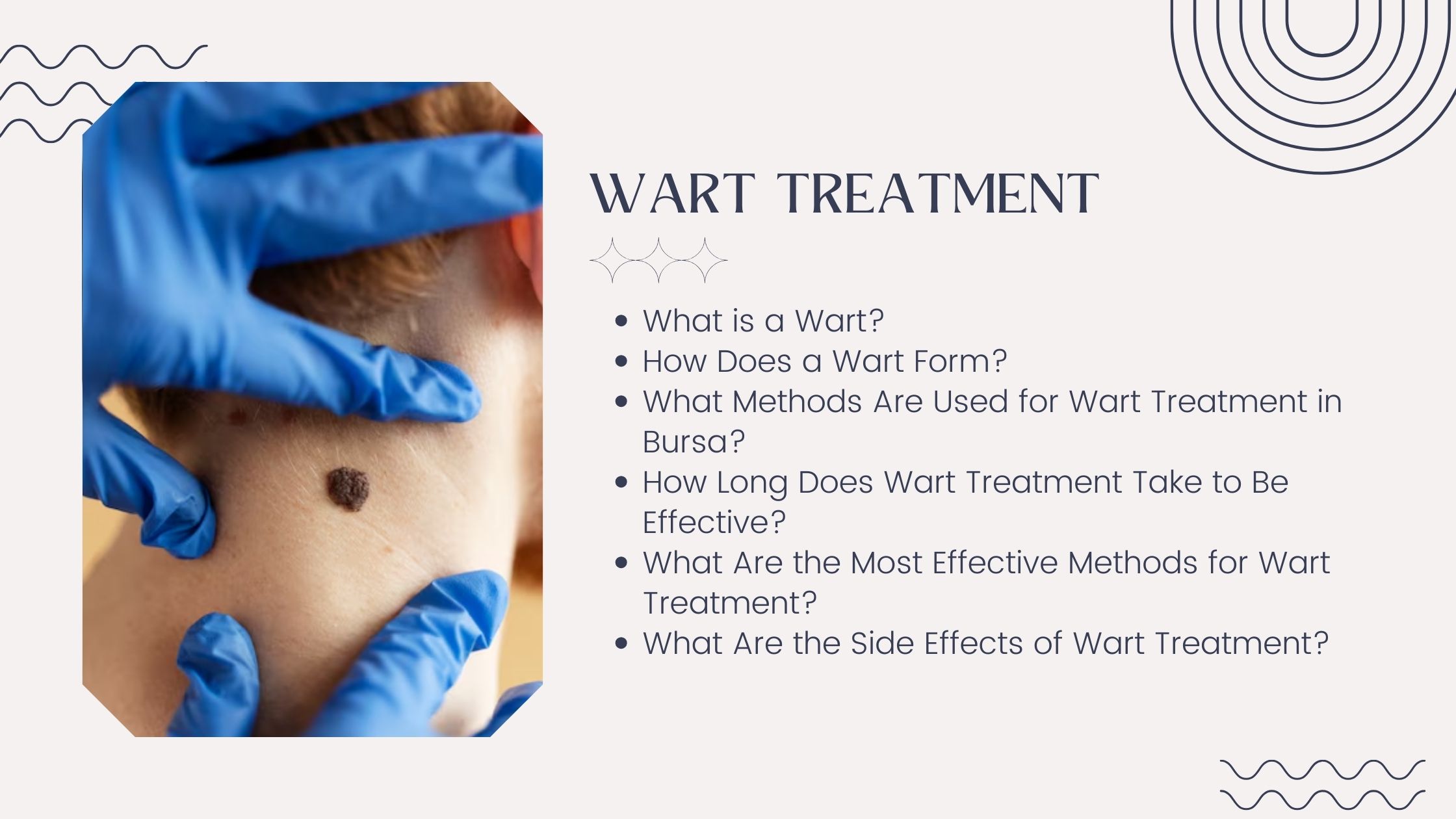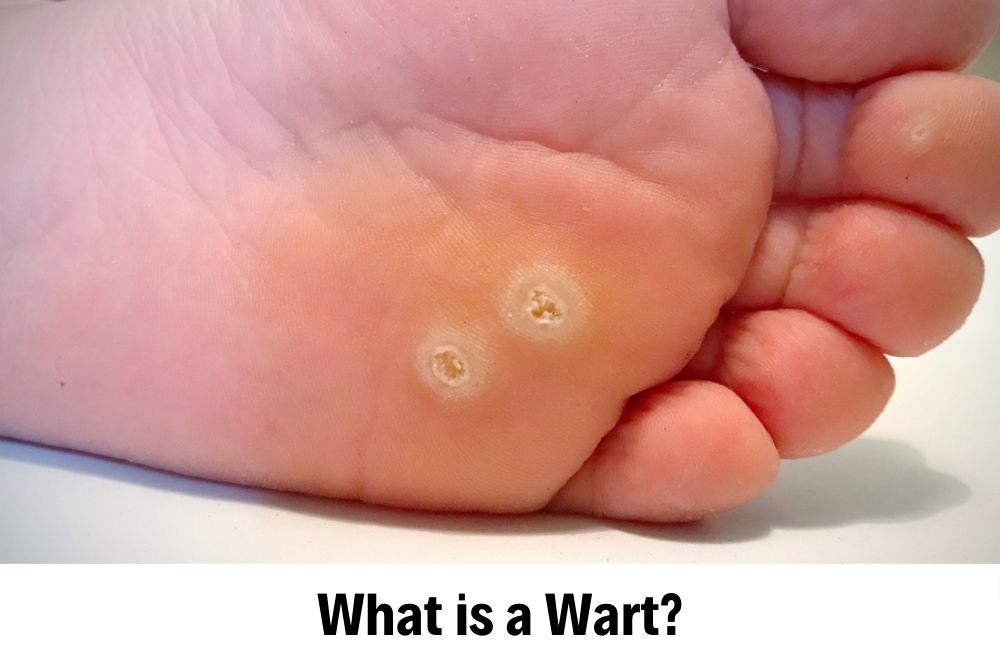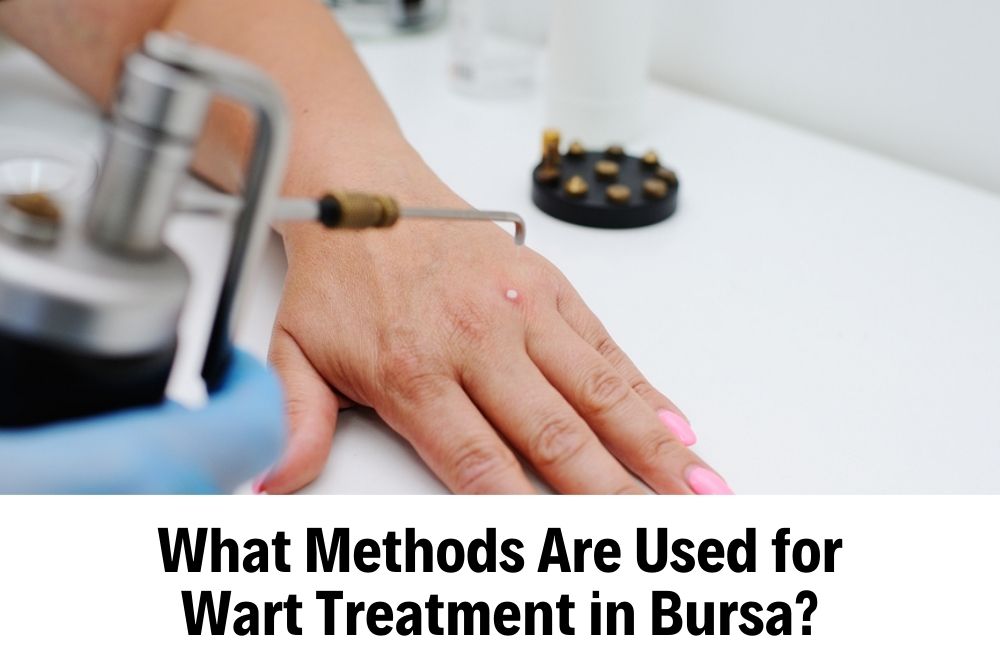Hello,
How Can We Help You?
Contact Form
Fill in the form and we will contact you as quickly as possible.
Contact us on Whatsapp
Scan with your camera app or click the QR code to start a conversation.


A wart is a skin lesion that can appear on various parts of the skin and is caused by an infection with the human papillomavirus (HPV). Warts typically appear as small, raised, firm, or soft growths or protrusions on the skin, which can be colored or skin-colored. Warts are contagious and can enter through small cuts or cracks in the skin surface to cause infection.
Contact with the HPV virus can cause warts to spread. Warts commonly occur on the hands, fingers, soles of the feet, toes, genital area, and face. Warts are usually painless but can be itchy or bothersome. Warts can be treated with various methods, including chemical applications, cryotherapy (freezing treatment), laser treatment, and surgical removal. Avoiding contact with infected areas and adhering to hygiene rules are important to prevent the recurrence of warts.

Warts occur when the human papillomavirus (HPV) infects the skin through contact. The HPV virus settles in the epidermis, the upper layer of the skin, and infects the skin cells. Transmission of this virus usually occurs through direct skin contact, contact with contaminated surfaces, or shared usage by infected individuals.
The HPV virus affects the mechanism that controls skin cells and causes uncontrolled growth of cells. This leads to the formation of raised or protruding warts on the skin. Warts commonly occur on the hands, fingers, soles of the feet, toes, genital area, and face.
Warts are contagious and can spread through contact with an infected person or contact with infected skin surfaces. Avoiding contact with infected areas, maintaining personal hygiene, and preventing the spread of the virus are important. It is important to consult a dermatologist for the treatment of warts and to determine the appropriate treatment method.
Various methods can be used for wart treatment. These methods are determined based on the type, location, and overall health of the wart. The most common wart treatment methods include:
The wart is frozen by applying liquid nitrogen to the wart. The frozen wart then falls off.
Acids or other chemical substances are applied to the wart to destroy and remove it. This method can help reduce the size and eliminate warts.
The wart is targeted and destroyed with laser beams. Laser treatment is often effective for deep and resistant warts.
The wart is burned and destroyed using electrical current.
Surgical removal method can be applied for large or resistant warts. The wart is surgically cut out.
It is important to consult a dermatologist to determine the most appropriate treatment method for each wart case. A specialist doctor evaluates the condition of the wart and recommends and applies the most effective treatment option. Regular follow-up during wart treatment and proper application of the treatment method ensure more effective results.

The effectiveness of wart treatment can vary depending on the treatment method and the size of the wart. Generally, wart treatment can result in a few weeks to a few months. Some mild warts can disappear within a few weeks with treatment methods such as chemical applications or cryotherapy. However, treatment of larger or deeper warts may take longer.
For example, the healing process of warts treated with more invasive methods such as laser treatment or surgical removal may be longer. After wart treatment, side effects such as redness, crusting, or mild pain may occur on the skin. Post-treatment symptoms generally disappear within a few days.
The duration and effectiveness of wart treatment may vary depending on factors such as the treatment method, type, size of the wart, and the individual's overall health condition. It is important to consult a dermatologist to determine the most appropriate treatment method and to manage the treatment process. A specialist doctor plans and monitors wart treatment tailored to the individual.
The most effective methods for wart treatment may vary depending on the type, size, and location of the wart. Generally, the following methods are effective for treating warts:
The wart is frozen and destroyed using liquid nitrogen. This method is generally effective for mild and moderate-sized warts.
Acids or other chemical substances are applied to the wart to reduce its size and eliminate it. This method is used to reduce and eliminate warts.
The wart is targeted and destroyed using laser beams. Laser treatment is often an effective option for deep and resistant warts.
Surgical removal method can be applied for large and resistant warts. The wart is surgically removed by cutting it out.
Since each wart case is different, it is important to consult a dermatologist to determine the most appropriate treatment method. A specialist doctor evaluates the condition of the wart and recommends and applies the most effective treatment option. Regular follow-up and proper application of the treatment method during wart treatment ensure more effective results.
Some side effects may occur during wart treatment. These side effects may vary depending on the treatment method and the condition of the wart. The most common side effects include redness, mild swelling, or tenderness at the treated area. Some treatment methods may cause crusting or small scars on the skin. In addition, changes in skin color may occur after wart treatment. Particularly, methods such as laser treatment may cause changes in skin color. There is also a risk of infection after treatment, so it is important to keep the treated area clean. Rarely, conditions such as pain or permanent skin damage may occur after treatment. Following the recommendations of your doctor carefully before and after wart treatment can help minimize side effects.
Contact Form
Fill in the form and we will contact you as quickly as possible.
Contact us on Whatsapp
Scan with your camera app or click the QR code to start a conversation.